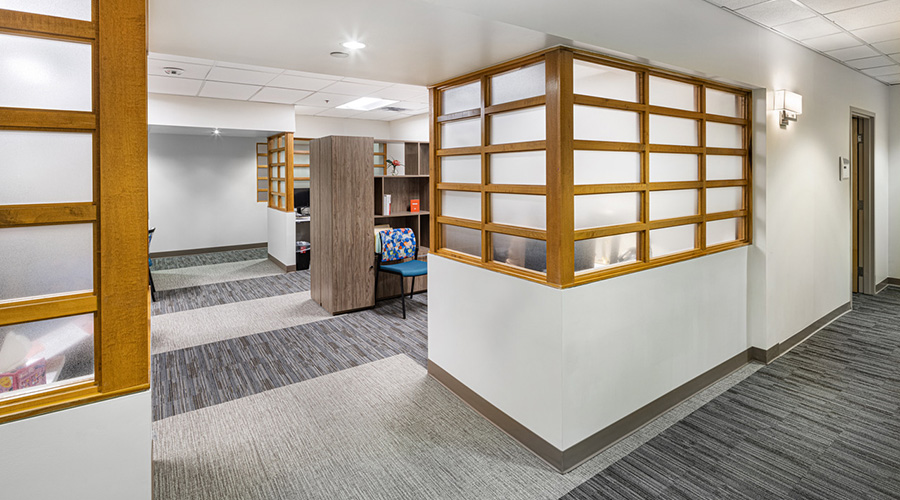Navigating the hallways and buildings of a complex hospital campus can add an extra layer of anxiety to an already stressful experience for patients, their families and friends.
As such, through the adoption of evidence-based and patient-centric design, a coordinated wayfinding system has become an essential part of healthcare facilities design — important not only to navigation, but also the overall patient and visitor experience.
Strides have been made to take a holistic approach to wayfinding, often with designers incorporating specific furnishings, color schemes and other design elements with traditional signage to guide people through healthcare facilities.
Now a new generation of technology-driven wayfinding tools is being added to the mix to help guide visitors to their destinations while contributing to a more enjoyable hospital visit.
The Mayo Clinic: There’s an app for that
The Mayo Clinic is harnessing the power and convenience of mobile technology to direct patients to and through its facilities. Introduced in May 2012, the Mayo Clinic Patient application leverages the location-based navigation capabilities of smartphones and other devices to help people find their way to appointments and amenities.
The institution’s sprawling presence in Rochester, Minn. — 16 million square feet across 59 different buildings — creates ongoing challenges for visitors, particularly the large number of people who visit the campus from other cities and international locations.
Adding to the complexity of the situation, many buildings are connected by subterranean pedestrian walkways that can be confusing and overwhelming to navigate.
“A handful of folks at Mayo had an idea to build an e-concierge application to improve navigation and wayfinding for patients,” says Mark Henderson, information technology division chair at Mayo Clinic. “At the time, there were no other healthcare companies doing something like this, but it seemed like the next logical step in portable technology.”
The free mobile app augments the hospital’s existing patient services, which include a network of volunteers working at information desks. “There will always be a friendly face to help and guide people,” Henderson says. “This electronic method just enhances what our employees and volunteers already do.”
In the first year since its debut, the iPhone app has been downloaded more than 100,000 times by individuals hailing from every major country in the world. Awareness of the app got a major boost when Apple CEO Tim Cook referenced it during launch events introducing the iPhone 5 and new iPad devices.
“It’s amazing to see the broad distribution we have built,” Henderson says. “For our international patients, the app provides an extra level of comfort in preparing for their visit to an unfamiliar country and clinic.”
A recently launched Android version enables users to receive turn-by-turn directions to any destination within any building on campus, thanks to sophisticated interior mapping provided by Google.
Beyond wayfinding within the clinic, the apps also help visitors find accommodations in the surrounding community.
“We know our out-of-town visitors spend about 30 percent of their time at the hospital and 70 percent out in the community looking for restaurants, hotels, ATMs and places with WiFi access,” Henderson says.
Mayo developed the tool in-house, using existing resources. Henderson’s team worked closely with the facilities team to conceive and build the application, which also includes secure access to personal medical records, messaging capabilities, hospital news and videos about the facilities.
“Facilities were very much a partner in the project,” Henderson says. “They served as the single point of contact for the mapping portion of the apps, recognizing that they are an extension of the maps and signs we have throughout the facilities.”

 Code Compliance Isn't Enough for Healthcare Resilience
Code Compliance Isn't Enough for Healthcare Resilience Ribbon Cutting Marks First Phase Completion for New Montefiore Einstein Facility
Ribbon Cutting Marks First Phase Completion for New Montefiore Einstein Facility Brooks Rehabilitation Launches 3 New Major Construction Projects
Brooks Rehabilitation Launches 3 New Major Construction Projects Joint Commission Standards: What Updates Matter Most?
Joint Commission Standards: What Updates Matter Most? Swinerton Completes Construction at Atlanta's Grady Hospital
Swinerton Completes Construction at Atlanta's Grady Hospital